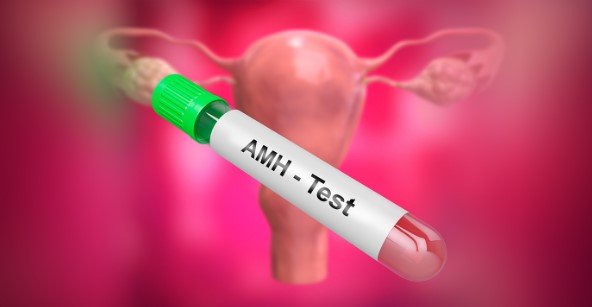AMH Test Explained: How It Helps in Family Planning and IVF Success

When embarking on the journey of starting a family, how can you best assess your reproductive health? What tools are available to help you understand your fertility and plan accordingly? One such tool, often recommended by specialists, is crucial in evaluating ovarian reserve and assisting in family planning.
AMH test is a basic blood test that estimates the levels of Anti-Müllerian Hormone in the body. This test provides valuable insights into ovarian reserve, which is vital for women considering family planning or undergoing IVF treatment. Understanding the results of this test can significantly impact decisions related to conception and fertility treatments.
The Role of Anti-Müllerian Hormone in Reproductive Health
Anti-Müllerian Hormone (AMH) is a substance produced by small follicles in the ovaries. Its primary role is to help regulate the development of follicles, which contain eggs. The level of this hormone in the blood is directly linked to the number of eggs a woman has left in her ovaries, often referred to as ovarian reserve.
As women age, the quantity of eggs in the ovaries naturally declines, so monitoring AMH levels can be essential to understanding reproductive health. The knowledge gathered from this test can guide individuals and teams in making informed decisions about when to start a family or pursue fertility treatments.
How the AMH Test Works
The test is an easy blood test, typically performed at any point during a woman’s menstrual cycle. Unlike other hormone tests that may need to be done on specific days, this test is not influenced by cycle fluctuations, making it a convenient and reliable measure of ovarian reserve.
Once the blood sample is accepted, it is sent to a laboratory where the level of Anti-Müllerian Hormone is measured. The results indicate how many eggs are present in the ovaries. A higher level suggests a higher ovarian reserve, while a lower level may indicate a diminished reserve, which could affect the ability to conceive.
Interpreting AMH Levels: What Do the Numbers Mean?
Understanding the results of the AMH examination is crucial for anyone considering starting a family. A higher level of AMH typically suggests that a woman has a larger pool of eggs, which can be reassuring for those who wish to delay childbearing. However, it’s important to note that a high AMH level does not guarantee fertility, as other factors also play a role in successful conception.
On the other hand, a lower AMH level may indicate that ovarian reserve is diminishing. For women who receive this result, it might be a signal to consider options such as trying to conceive sooner rather than later or exploring fertility treatments. Examining the results with a healthcare provider who can deliver personalized advice based on the individual’s overall health and reproductive goals is essential.
AMH Levels and Age: How They Correlate
Age is a significant factor in a woman’s fertility, and AMH levels naturally decrease as a woman ages. This decline in AMH is gradual but steady, which is why younger women typically have higher hormone levels. Understanding this correlation can help make more informed decisions about family planning, especially for those considering delaying pregnancy.
AMH levels are generally higher for women in their 20s and early 30s, indicating a more abundant ovarian reserve. As a woman approaches her late 30s and 40s, AMH levels typically decrease, reflecting the natural decline in fertility. Monitoring AMH levels over time can provide valuable insights into how quickly ovarian reserve may diminish, particularly useful for long-term family planning.
Read also: Foundation of Healthy Eating
Interpreting the Results for Family Planning
Understanding the results of the AMH test is crucial for anyone considering starting a family. A higher level of AMH typically suggests that a woman has a larger pool of eggs, which can be reassuring for those who wish to delay childbearing. However, it’s important to note that a high AMH level does not guarantee fertility, as other factors also play a role in successful conception.
On the other hand, a lower AMH level may indicate that ovarian reserve is diminishing. For women who receive this result, it might be a signal to consider options such as trying to conceive sooner rather than later or exploring fertility treatments. Examining the results with a healthcare provider who can deliver personalized advice based on the individual’s overall health and reproductive goals is essential.
The Impact of AMH Levels on IVF Success
Understanding AMH levels is particularly important for those undergoing IVF treatment. The level of Anti-Müllerian Hormone can help predict how a woman might respond to ovarian stimulation, a critical step in the IVF process. Women with higher AMH levels may produce more eggs during stimulation, increasing the chances of successful fertilization and implantation.
However, it’s important to remember that while a higher AMH level can be advantageous, it does not guarantee IVF success. The quality of the eggs, the uterus’s health, and the overall treatment plan all play significant roles in achieving a successful pregnancy. Therefore, the AMH is just one piece of the puzzle when it comes to learning fertility and planning for treatment.
The AMH test is valuable for anyone considering family planning or undergoing IVF treatment. It provides insights into ovarian reserve, helping individuals make informed decisions about their reproductive health. However, it’s important to remember that this test is just one part of the fertility equation. Considering all aspects of health and wellness, a comprehensive approach is essential for achieving the desired outcome in family planning and fertility treatments.





